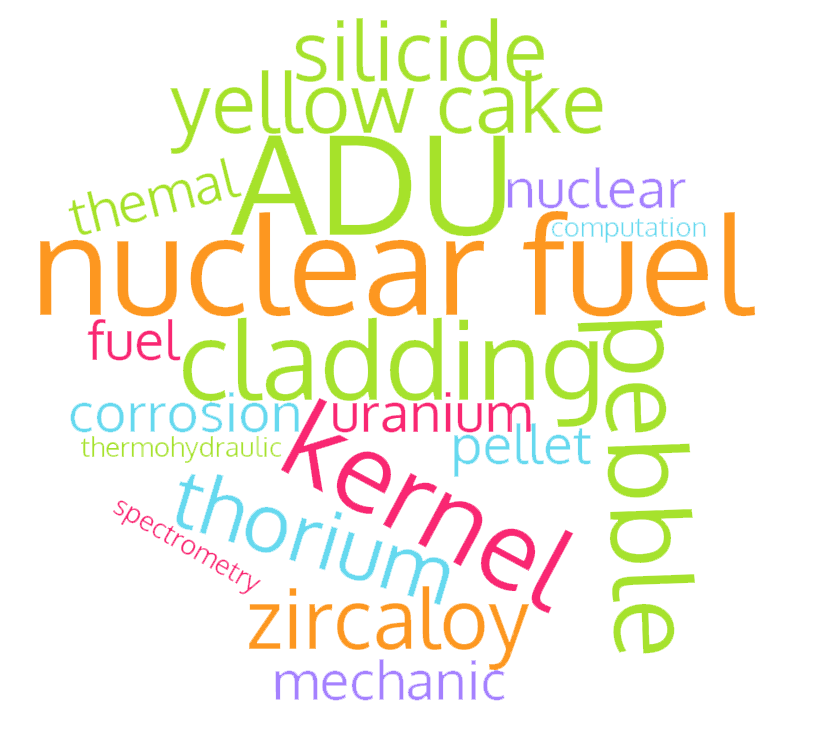PENGARUH PERLAKUAN PANAS TERHADAP KETAHANAN KOROSI BATAS BUTIR BAJA TAHAN KARAT TIPE 316
DOI: http://dx.doi.org/10.17146/urania.2008.14.3.2581
Sari
ABSTRAK
PENGARUH PERLAKUAN PANAS TERHADAP KETAHANAN KOROSI BATAS BUTIR BAJA TAHAN KARAT TIPE 316. Dalam industri nuklir, baja tahan karat, paduan alumunium dan zirkaloy digunakan sebagai komponen pendukung reaktor riset atau daya dalam bentuk tangki bertekanan, pipa, kelongsong, dan bahan struktur. Baja tahan karat tipe 316 dan 316L digunakan sebagai kelongsong bahan bakar reaktor LMFBR dimana temperatur operasinya bisa mencapai sekitar 500oC. Pada suhu tinggi jenis baja ini akan mengalami sensitasi. Ketahanan sensitasi ini akan ditentukan menggunakan alat Potensiostat dengan metode uji potensiodinamik dan pengamatan permukaan hasil uji korosi dengan alat SEM. Tujuan dari penelitian ini adalah untuk menganalisa pengaruh perlakuan panas terhadap ketahanan korosi terutama terhadap serangan kondisi batas butir. Bahan SS 316 yang telah dilaku panas normalizing pada suhu 550 dan 650 dan solution treatment pada suhu 350, 450, 550 dan 65 oC diuji korosi menggunakan alat potentiostat. Dari uji korosi dihasilkan bahwa laju korosi meningkat dengan meningkatnya suhu perlakuan panas baik proses normalizing maupun solution treatment. Laju korosi sampel yang dilaku panas pada suhu 550 dan 650 oC tanpa solution treatment menghasilkan laju korosi lebih besar dibanding dengan proses solution treatment, dengan perbedaan laju korosi sebesar 35,82 mpy untuk suhu 550 oC dan 24,97 mpy untuk suhu 650 oC. Hasil pengamatan morfologi permukaan memperlihatkan adanya korosi batas butir pada rentang suhu 550 – 650, sedangkan untuk rentang suhu 350 – 450 tidak menunjukkan terjadinya korosi batas butir.
Kata Kunci : korosi batas butir, baja tahan karat austenitik, sensitasi
ABSTRACT
Heat Treatment fluence to intergrannular corrosion succeptibility of stainless steel type 316. Stainless steel was used in nuclear industry as cladding of Liquid Metal Fast Breeder Reactor (LMFBR), which operation temperature above 500 0C. According to the theory, resistance of stainless steel type 316 is good enough, but in the high temperature tend to influence by intergranular corrosion. The sensitization degree of Stainless Steel type 316 ( SS 316 ) was calculated by potentiostat using potentiodynamic method, and was observed by scanning electron microscope ( SEM ). The objective of this research was to analized the effect of heat treatment on corrosion resistance. First, samples were heat treated at 1,000°C for 3 hours and then were quenched in the water for 30 minutes. Samples were heat treated for 6 hours on the temperature : 350, 450, 550, and 650°C. The heat treated samples were corrosion tested by Potensiostat model M 273 with Potensiodynamic method. The surface of samples were observed by SEM. Three kinds of SS 316 samples : blank, solution treatment, and ageing for 650oC were characterized by x–ray diffractometer. The result showed that the corrosion rates increased with the increasing temperature. The corrosion rate of samples heat treated at 550 and 650°C were 105,9 and 118.37 mpy, the samples were heat treated at 350 and 450 °C after solution treatment did not exhibit intergranular, corrosion rate respectively were 89,39 and 91,06 mpy. The corrosion rates of samples that were heat treated at 550°C and 650°C without solution treatment, revealed were higher than with solution treatment.
Keywords : intergranular corrosion, austenitic stainless steel, sensitization
Teks Lengkap:
PDFRefbacks
- Saat ini tidak ada refbacks.
Penerbit: Pusat Riset Teknologi Daur Bahan Bakar Nuklir dan Limbah Radioaktif
Diindeks oleh:









